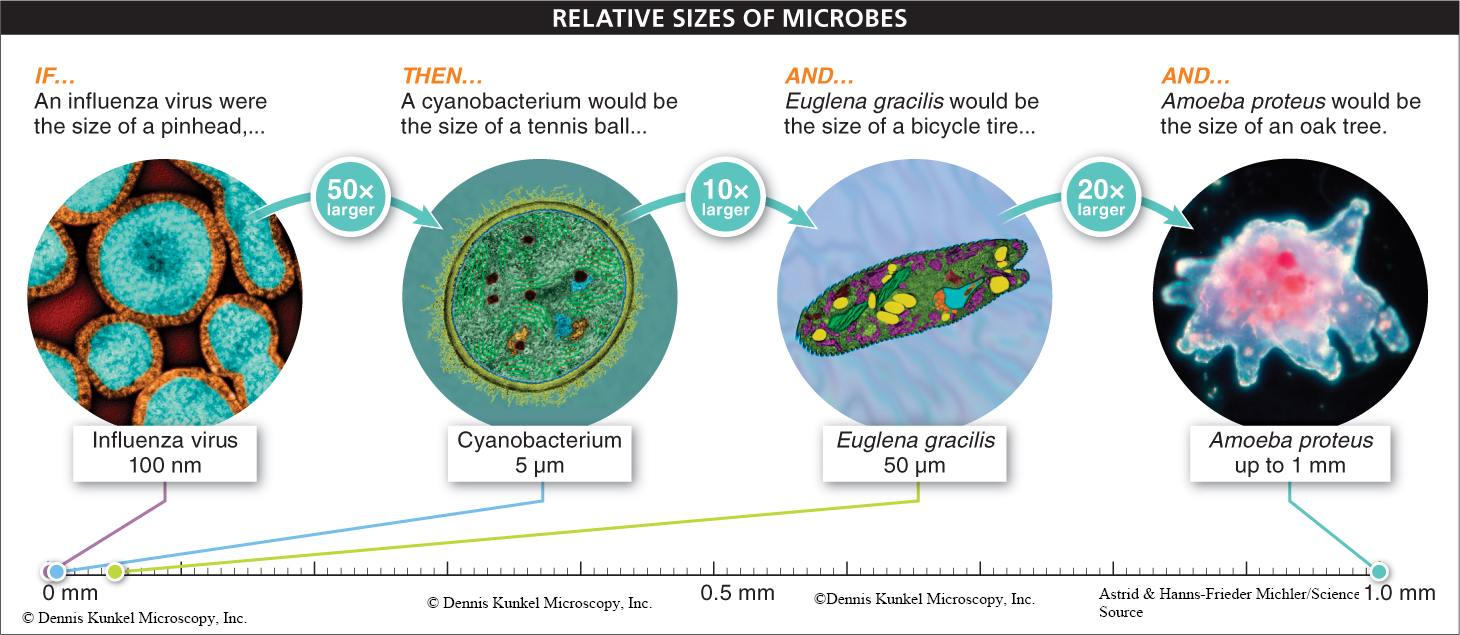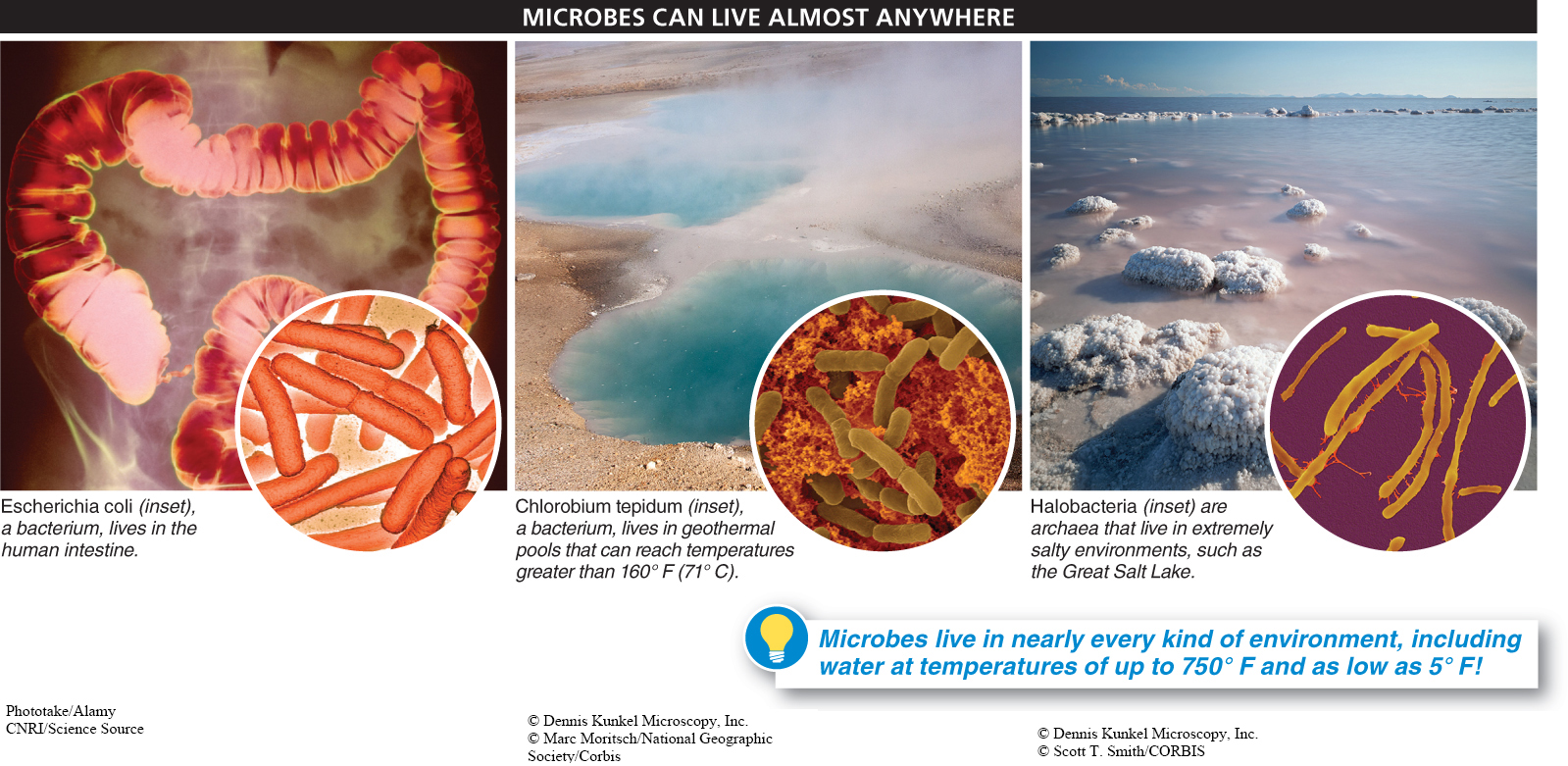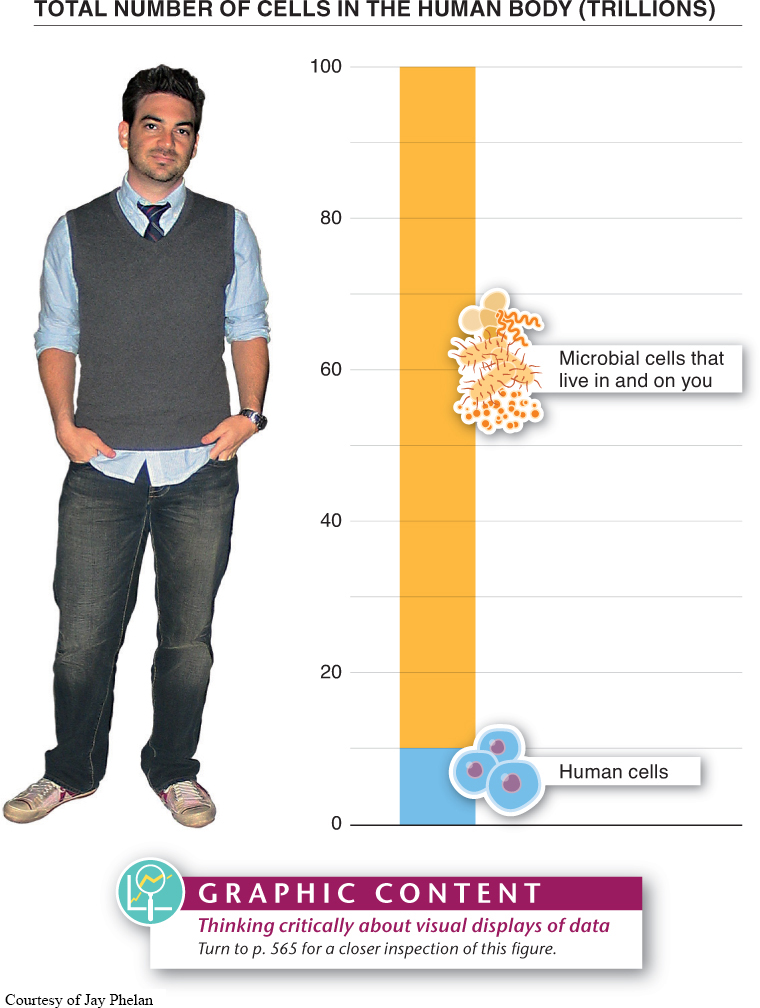Humans are large organisms, and being large comes with some “baggage.” We need a skeletal system to support our weight, and a respiratory system to take in oxygen and get rid of carbon dioxide. We need a circulatory system to move oxygen, carbon dioxide, and other molecules around our bodies, and a digestive system to take in food and break it down. We even need a nervous system so that our brain knows what distant parts of our body are doing.
How can a microbe function when its body is just a single cell?
Microbes—
Most microbes are even smaller than an amoeba: a typical bacterium or archaeon is about one thousand million billion (1018) times smaller than a human, and an influenza virus is about one thousand billion trillion (1024) times smaller than you are (FIGURE 13-2).

They may be invisible, but microbes could never be considered unsuccessful just because of their (lack of) size. They are actually more successful than humans in almost every imaginable way.
Microbes are genetically diverse. More than 500,000 kinds of microbes have been identified by their unique nucleotide sequences, and further studies will almost certainly distinguish millions of additional microbial species.
Microbial species live in almost every habitat on earth; among them, they can eat almost anything. As you read these lines, more than 400 species of microbes are thriving in your intestinal tract (FIGURE 13-3), 500 more species thrive in your mouth, and nearly 200 species call your skin home. The microbes that live in and on you eat mostly what you eat—

536
Living conditions in the human body are relatively moderate. Other microbes inhabit some of the toughest environments on earth—
Microbes are abundant. Surface seawater contains more than 100,000 bacterial cells per milliliter, and diatoms (protists in the eukarya domain) are as abundant there as are the bacteria. These densities translate to about 8,000 million billion trillion (8 × 1030) individuals of just these two kinds of microbes in the world’s oceans. Your own body is a testament to the abundance of microbes: it contains about 100 trillion cells, but only one-

537
TAKE-HOME MESSAGE 13.2
Microbes are very small, simple organisms, but they do everything that larger, multicellular organisms do. They can live anywhere, from moderate to extreme environments. There are millions of different kinds of microbes on earth, in enormous numbers.
Why is it fair to say that microbes are more “successful” than humans?
Because, as a group, they are more genetically diverse, are able to live in almost every habitat on earth, can eat almost anything, and are extremely abundant.
538